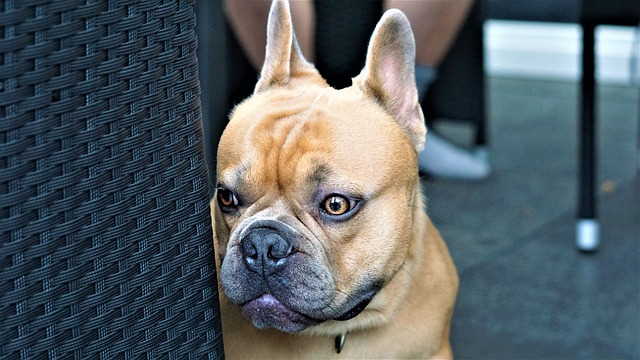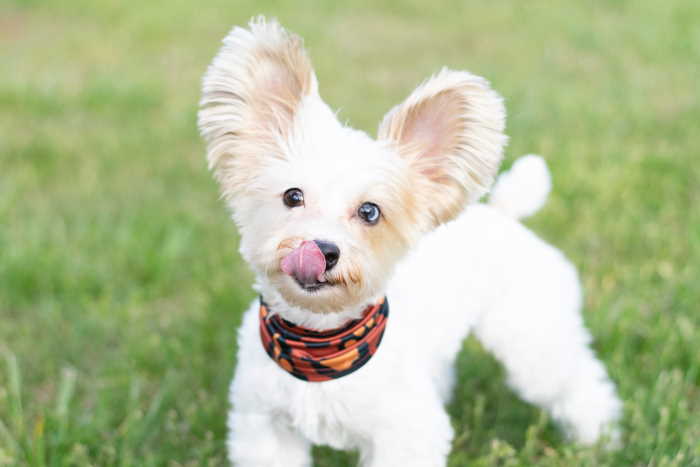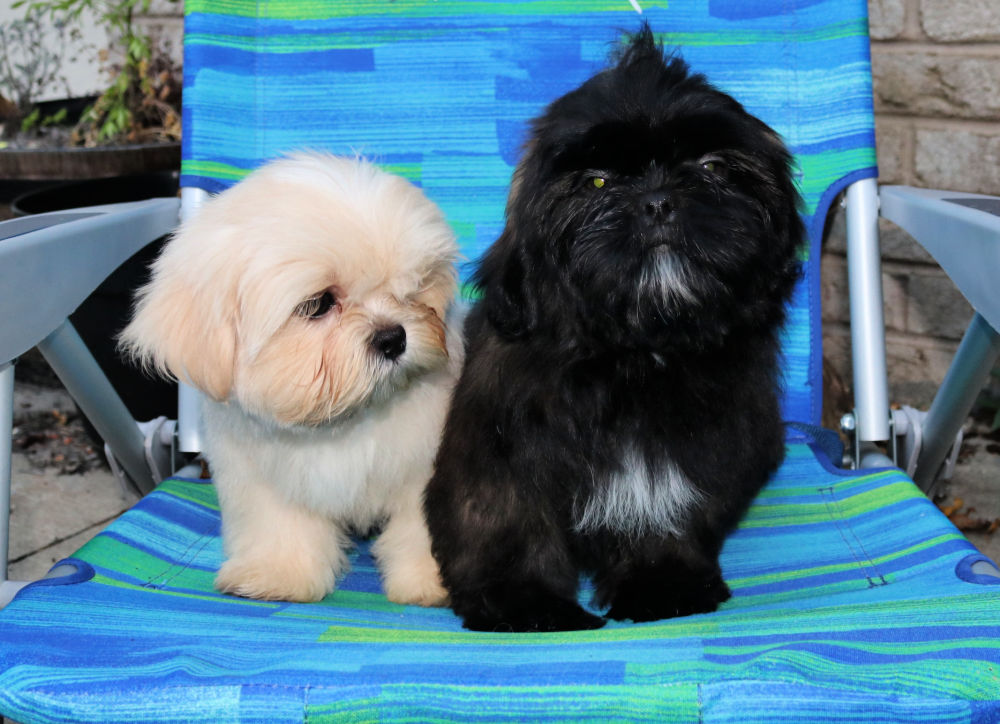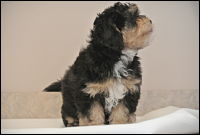- Small Dog Place Home
- Puppy Behavior Problems
- Calm Down Your Dog
Calm Down Your Dog
Calm Down Your Dog by Johnny Fontaine |Updated 11-03-2023
Whether it's separation anxiety or the presence of an animal or person a dog doesn't like, all dogs get anxious and need a little help to be calmed. Our dogs appreciate our efforts to calm them down.
Dogs, too, have a way to calm themselves down.
Here are five useful tips to help your anxious dog achieve a level of calmness.
Tips to Calm Down Your Dog
 Tips to Help You Calm Down Your Dog
Tips to Help You Calm Down Your Dog1. An Easy Way to Calm Down Your Dog is to Allow him to Rest Naturally
In all of the methods described below, they work because they help your dog get calm by mirroring your calm. The first thing you should do is ensure that your dog can rest naturally by removing any triggers around the dog and reducing any movement.
A sense of belonging and safety is essential for your dog as it is essential for all animals. All species of animals have a lookout who will stay awake to see any potential threats and alarm the others if the threat is approaching. So, give your dog this sense of safety and make sure that he/she understands that you don't need them to stay guard to keep you safe.
It is best that your dog feels wholly supported as opposed to having to be the supporting party. They need to know that they are entirely safe. This is how I prevent issues such as separation anxiety, following, and other unwanted behaviors.
Once you start with this solid foundation to calm your dog, it will go a long way in showing them that they can calm down and rest easy until it's time to do various activities. CBD oil for dogs has been proven to help with anxiety and separation anxiety.
Removing the pain of leaving starts at home. So, it would be best if you always prioritized this when you have a new dog or puppy to rest and sleep comfortably. We will now look at a couple of techniques to help achieve calm when you need to leave your home.
2. To Calm Down Your Dog, Remain Quiet Yourself and Avoid Eye Contact
A lot of good happens when you remove your dog's focus and avoid eye contact or talking to him/her.
If your dog performs various attention-seeking actions, you should avoid making eye contact and occupy yourself with other activities such as talking to a friend, going on the phone, or even leaving the space.
Doing this takes the pressure off of your dog so that they can react in more natural canine ways. This will help them to be more of themselves, and they will calm down and relax. So, you need to have some patience and give them the space to be who they are.
3. Achieve calm by touching your dog with your palm
After you've done what was described in the point above and your dog is still pacing, simply put your palm against their body, such as near to their ribs or front legs. This will actually help them to relax and calm down since it shows that you're permitting them to relax.
You should avoid grabbing your dog, as this can cause them to back away from you. It is better to look downwards and put your hand on the floor, which your dog will react to by coming closer. This is because they are very curious, and you can put your palm on them along their side.
Dogs enjoy having their inner back leg massaged. So, put your palm there and gently massage, and you'll see your dog relax and calm down.
You should remember to avoid any eye contact or talking to them. Simply touch and massage your dog and enjoy the connection between yourself and your canine companion.
4. Calm Down Your Dog By Going for a Calm Walk
Simply put your dog on a leash and take them for a walk in your home or neighborhood. Now, it is essential that you don't drag your dog or pressure them unnecessarily. If they stop, all you need to do is slant the lead downwards and keep some pressure on it and avoid any eye contact.
Your dog will move, and if you're at home and they lay down, you've helped your dog become calm. If they get up, all you have to do is take them to their usual resting place and place some tension on the lead.
This will make them lay down and relax. When putting pressure, only do so for a few seconds and then gently place the lead on the floor. However, if you're out and about, and your dog lays down, simply walk around them, which will help them get back up and continue walking.
While your dog is walking with you on the lead and doing so quite well, you should praise them calmly. This means elongating your words and putting stress on the vowels.
You can also combine this with gentle touches. What works best for your dog is individual, and you will be able to figure out what works for him/her.
For example, doing the touch, verbalization, and looking at them may be too much stimulation with some dogs. So, when starting, simply do one and add according to how your dog reacts.
5. Walk Towards Your Dog to Help Calm Down Your Dog
If you have an excited dog that is jumping up on you, step in towards them. Avoid verbally correcting or any eye contact. Once you do this, your dog will stop jumping and step down.
If you don't give them attention when they do a wrong behavior, they will change their behavior and be more respectful. So, be sure to keep doing this as it takes a while to work for some dogs.
The majority of dogs jump when they are stressed or if they become too excited. Be sure to read more on how you can stop your dog from jumping on you or others.
Can Dogs Calm Themselves Down?
We always want to be there for our four-legged companions, but we must also be aware that dogs have built in mechanisms that they use to calm themselves. If you notice any of these calming behaviors, you can be sure that your dog is trying to regain a sense of calm.
5 Dog Calming Signals
1. Yawning
 Yawning is one method dogs use to calm themselves down.
Yawning is one method dogs use to calm themselves down.Yawning doesn't necessarily mean a dog is tired. Rather, yawning helps a dog to de-stress. A dog will yawn when they find themselves in a situation that feels uncomfortable.
Very young puppies will beginning using this behavior as early as 5 weeks old. So if you are bringing home a new puppy for the first time and notice he is doing a lot of yawning, suspect he's more nervous than tired.
2. Licking
 Photo by Katie Bernotsky on Unsplash
Photo by Katie Bernotsky on UnsplashEver notice a dog licking his nose and around his mouth? This type of licking is another way that dogs will calm themselves down.
Again, this signal is in response to a situation that is making the dog uncomfortable such as meeting another dog or person or being placed in a location where they cannot quickly escape.
3. Tail Wagging
You may interpret a dog who is wagging his tail to be happy or excited. While tail wagging can mean those things, dogs may wag when they feel anxious or threatened. An anxious wag is will look a little different.
The dog will hold his tail lower and wag faster in that position. It is subtle and most humans don't always the muted dog body language that speaks volumes.
4. Avoiding Eye Contact
 Notice how one puppy is looking directly at the camera where the other one refuses to look at the camera or person taking the photo.
Notice how one puppy is looking directly at the camera where the other one refuses to look at the camera or person taking the photo.Dogs signal to other dogs that they aren't a threat by avoiding any eye contact. Prolonged eye contact between dogs is rare. They may look at each other especially if one wants to play, but then look away.
Dogs understand that if they avoid eye contact with another dog, they will be perceived as non-threatening. Dogs that stare into the eyes of other dogs are trying to establish dominance.
Some dogs avoid eye contact with people as well. Some of it is due to genetics, but socialization and early life experiences may make a dog less likely to make eye contact with people. While not a classic calming signal avoiding eye contact does help a dog relax.
5. Turning Away
 Turning away from the source of anxiety is one way a dog will calm himself down.
Turning away from the source of anxiety is one way a dog will calm himself down.Whether it is turning their body away from a threat or just turning their head, dogs have learned that much conflict can just dissolve by these simple small acts.
Remember as a kid, when you found yourself in a tense situation, you might have heard an adult tell you, "just walk away." Dogs learn this skill at a very young age.
If another dog or person walks towards your dog in front, you'll likely notice him turning away. The same is true if you approach a dog by bending over him to touch his head, he's likely to turn his head. If your dog senses you are angry with him, watch him turn away.
Try carrying a small dog into a veterinary clinic and watch what happens when another stranger walks over to you to pet your dog. Does he turn his head or bury his head in your shoulder?
The simple act of turning away solves conflicts in the dog world and reduces stress in tense people - dog interactions.
Author Bio: Calm Down Your Dog
Johnny Fontaine has two Alsatians and has been a dog lover all his life. Aside from that, he enjoys mountain hiking and free swimming.
Did You Find Calm Down Your Dog Helpful?
About Janice (author and voice behind this site)
Having lived with dogs and cats most of her life, Janice served as a veterinary technician for ten years in Maryland and twelve years as a Shih Tzu dog breeder in Ohio.
Her education includes undergraduate degrees in Psychology with a minor in biology, Early Childhood Education, and Nursing, and a master's in Mental Health Counseling.
She is a lifelong learner, a dog lover, and passionate about the welfare of animals. Her favorite breed for over 50 years has been the Shih Tzu, but she has also lived with Poodles, Maltese, Yorkshire Terriers, Beagles, English Bulldogs, Carin Terriers, and a Cocker Spaniel.
When not writing, reading, and researching dog-related topics, she likes to spend time with her eight Shih Tzu dogs, husband, and family, as well as knitting and crocheting. She is also the voice behind Miracle Shih Tzu and Smart-Knit-Crocheting
Does This Article Deserve Your Thumbs Up?
We always appreciate your support and encouragement. Your thumbs up means so much to us. Please like this article.
If you find this page or any page on Small Dog Place Helpful, or useful in anyway, I'd love it if you would click the small heart found on the bottom right of each page.
You can also share or bookmark this page -- just click on the:

Free Monthly Newsletter
Sign Up for Our Free Newsletter and get our Free Gift to You.
my E-book, The Top 10 Mistakes People Make When Choosing a Dog (and how to avoid them)

